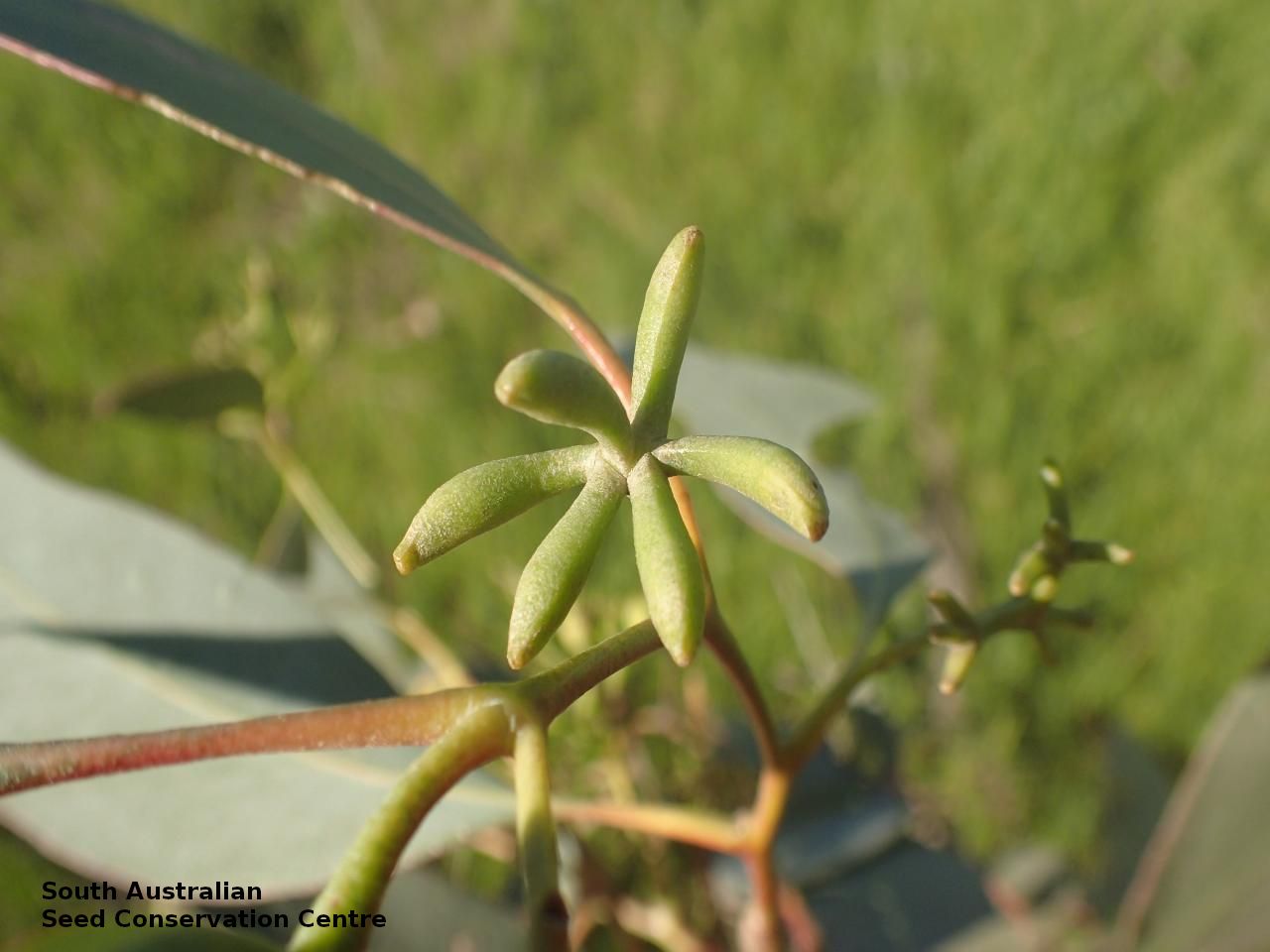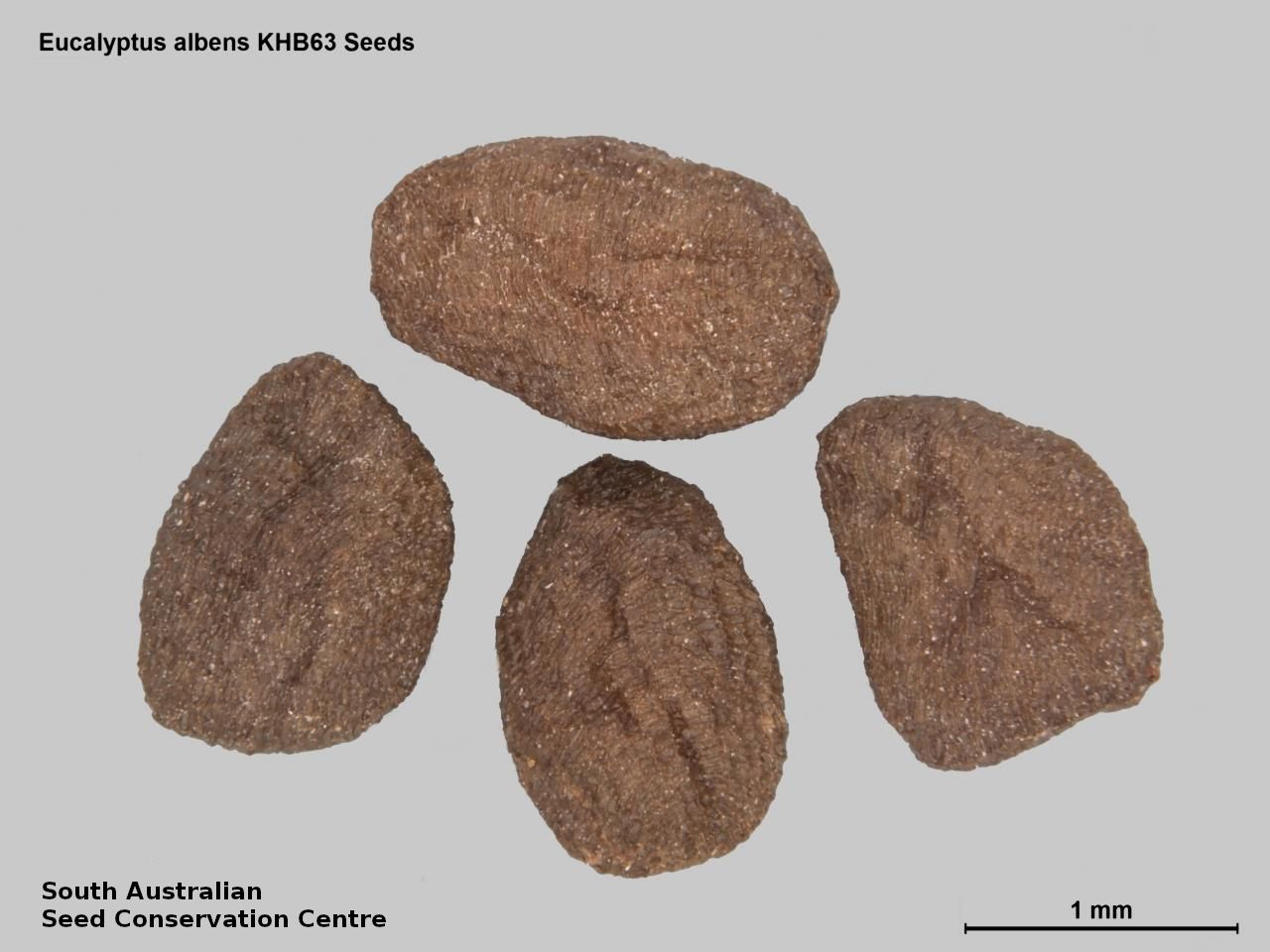



Botanical art
Prior names
Eucalyptus albens var. elongata
Eucalyptus hemiphloia var. albens
Etymology
Eucalyptus from the Greek 'eu' meaning well and 'calyptos' meaning covered; alluding to the cap or lid which covers the stamens in the bud. Albens from the Latin 'albens' meaning whitened, referring to either the lighter, bleached patches of bark or the waxy branchlets.
Distribution and status
Found in the southern Flinders R, growing in undulating to hilly terrain on loam to clay soils. Native. Rare in South Australia. Common in the other States.
Herbarium regions: Flinders Ranges, Northern Lofty
NRM region: Northern and Yorke
AVH map: SA distribution map (external link)
Plant description
Single-stemmed trees to 22 m or more high, with rough, sub-fibrous, light-grey bark below and smooth and greyish above. Juvenile leaves opposite to alternate, petiolate, broadly lanceolate or ovate. Adult leaves on petioles to 25 mm long, broad-lanceolate, dull, bluish-green, usually waxy, to 15 cm long and 3 cm wide. Flowers in panicles or in umbels of 3-7 in the axils. Buds often on poorly-defined pedicels to 4 mm long; ellipsoid to fusiform, waxy, bluish-green; smooth, to 15 mm long and 6 mm wide. Bud-cap elongate-conical, equal to or exceeding the bud-base. Flowers white. Flowering mainly between May and July. Fruits are cylindrical-ellipsoid fruit, with a narrow rim and broad sunken disk to 12 mm long and 10 mm, with valves small, deeply enclosed. Seeds are brown ovoid seed with fine wrinkles; to 2 mm long and 1 mm wide, Seed embryo type is folded.
Seed collection and propagation
Collect seeds between January and December. Collect mature fruits that are dark and hard (difficult to break with a finger nail), with the valves un-open any time of year. Leave the fruits in a breathable container in a dry room for one to two weeks. This allows the valves on the fruit to open and release the seeds. Separate the seeds by placing all the materials into a bucket and shaking it to dislodge the seeds. Pass the material through a sieve to separate the unwanted material. The finer material will contain both seeds (soft) and frass (hard) usually distinguishable from each other but can be very similar in shape and colour. With finer sieves, the seeds can be separated from the frass but this is not essential for storage or propagation. Store the seeds with a desiccant such as dried silica beads or dry rice, in an air tight container in a cool and dry place. From one collection, the seed viability was high, at 100%. Seeds are non-dormant, viable seed should germinate readily.
| Location | No. of seeds (weight grams) | Number of plants | Date collected | Collection number Collection location | Date stored | % Viability | Storage temperature |
|---|---|---|---|---|---|---|---|
| BGA MSB | 7,350 (7.39 g) 7,350 (7.39 g) | 25+ | 9-Oct-2006 | KHB63 Northern Lofty | 1-Aug-2007 | 100% | -18°C |
| BGA | 4,500 (2.16 g) | 15+ | 23-Aug-2014 | NRD69 Northern Lofty | 1-Jan-2016 | 100% | -18°C |
Number of plants: This is the number of plants from which the seeds were collected.
Collection location: The Herbarium of South Australia's region name.
% Viability: Percentage of filled healthy seeds determined by a cut test or x-ray.